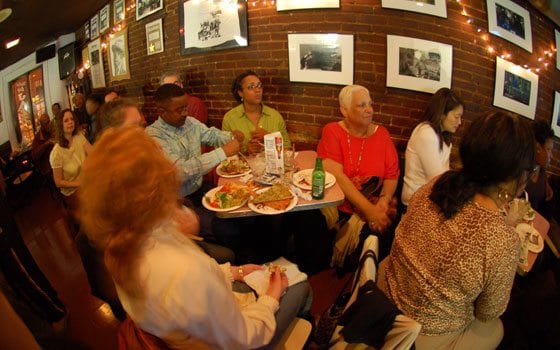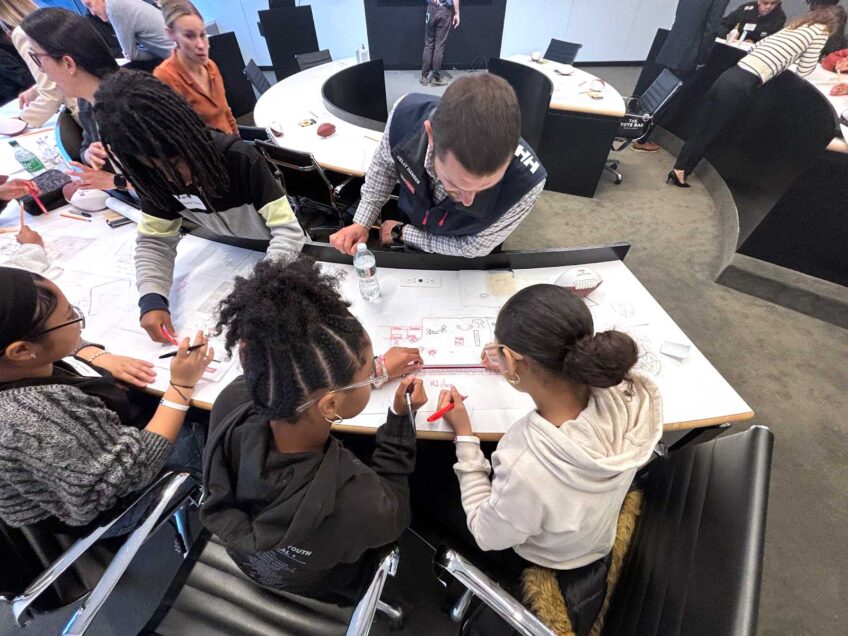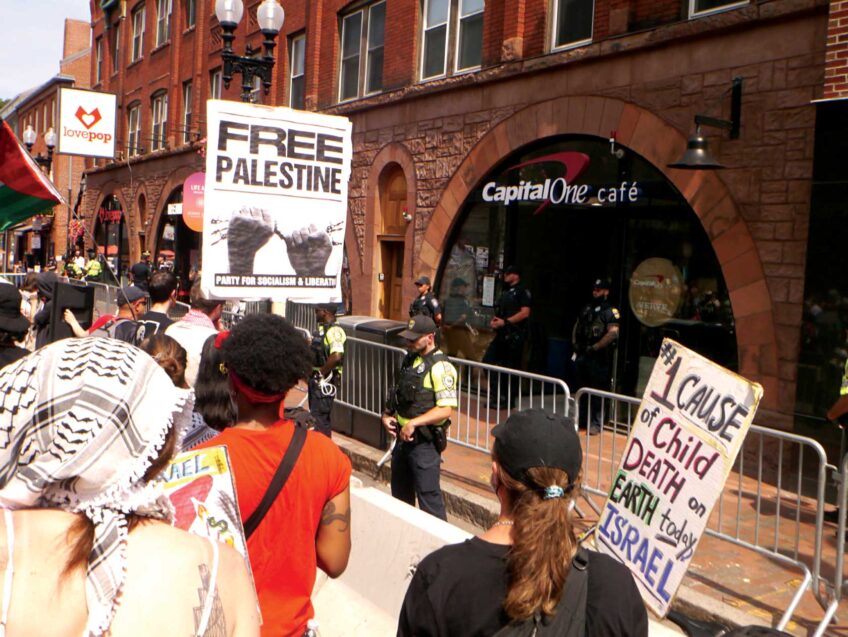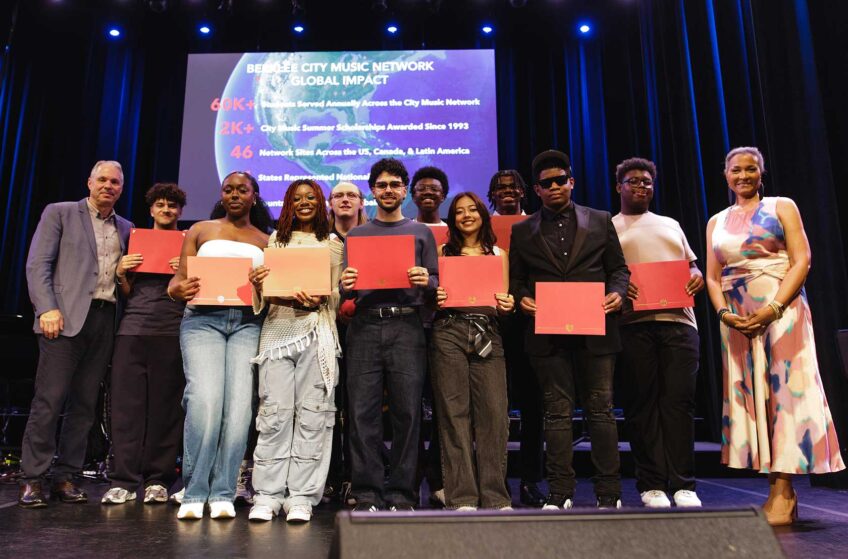
For more than 70 years, jazz greats have jammed at Wally’s
Wally’s Café Jazz Club has long been one of America’s most cherished jazz joints. Music lovers from all over gravitate to the venerable brownstone for riveting blues, Latin jazz, funk and fusion.
On any given night, the club’s tiny stage might host musicians influencing the jazz world’s past, present and future. That’s often the case during its Sunday jam sessions, featuring the likes of saxophonists Branford Marsalis and Donald Harrison.
But Wally’s is more than a place to take in free, live music 365 days a year. As one recent look inside the club and back through its past showed, the Mass. Ave. mainstay is a family heirloom, a cultural institution and an American historical artifact.
Opened in 1934 by Joseph L. “Wally” Walcott, an immigrant from Barbados, Wally’s is one of the country’s oldest family-owned and -operated jazz venues, and was New England’s first black-owned jazz club. Situated blocks from the musical troika of Berklee College of Music, the New England Conservatory and the Boston Conservatory, the club is an incubator for notable jazz artists like saxophonists Jimmy Greene and Andre Ward.
Originally called Wally’s Paradise, the club also holds a special place in American history, having forged an abiding home in what has been a prominently black community, and treated guests to late, after-hours jams by Charlie Parker and John Coltrane.
Wally’s usually fills up with patrons from all walks of Boston life, a rare coming-together that has always characterized the club’s open, barrier-breaking and unpretentious reputation. Celia Granola of Roxbury said she comes to Wally’s “all the time.”
“It’s one of the few places in Boston where every kind of person mingles,” she said. “You come in and don’t know who’s gonna be here. It’s a slice of the city.”
Tony Neal, 50, said he grew up “right around the corner” from Wally’s, and has been coming to the club since he was 18.
“This is my neighborhood bar,” said Neal, whose father owned a real estate business on Columbus Avenue. “I come to hear live jazz and to connect with my neighbors. There aren’t too many places for people of color to come together and socialize in this neighborhood.”
Neal said he has witnessed his neighborhood evolve into “one large Northeastern University-slash-New England Conservatory-slash-Berklee campus.” But, he said, Wally’s is “totally the same place.”
“It’s really like two neighborhoods, the newcomers and the old-school,” Neal said. “The traditional folk all know and acknowledge each other.”
Neal has seen many of the country’s jazz greats: “Roy Hargrove, Wynton Marsalis, Lalah Hathaway, who used to live next door to me. You name them, I’ve seen them.”
Last Thursday, local cultural nonprofit group Discover Roxbury hosted “A Night at Wally’s,” giving visitors a chance to delve into the club’s rich history.
Derek Lumpkins, the event’s coordinator, said he expected Discover Roxbury’s first nightlife outing to draw not only attendees in their fifties and above, but also those in their twenties and thirties.
“We’re trying something new,” he said. “We wanted to give younger adults some new options.”
For last Thursday’s gathering, Frank Poindexter, one of Wally’s grandsons, presented a slideshow that included photographs dating back to the time of the club’s opening in 1934 and its later incorporation in 1947, showing the kind of the company his grandfather kept over the decades. Poindexter talked about how Wally, who had been a taxi cab driver working around the State House and was “always networking,” befriended city and state legislator Gabriel Piemonte and Mayor James M. Curley, who helped him establish his business.
Wally died in 1998 at age 101. Elynor Walcott, Wally’s daughter, now owns and manages the club with Frank and her other two sons, Paul and Lloyd. She said her father started the business “so that his people could have someplace to go.”
Noting a few of the “seminal figures” who have lived in the area — including A. Philip Randolph, Martin Luther King, Malcolm X and Louis Farrakhan — Frank Poindexter spoke of the thriving black community of that time, which included “intellectuals, major community and social organizations and business associations.”
“There were even debutante balls,” he said. “Wally’s was a place where the black society could go and enjoy our music.”
The intersection of Massachusetts and Columbus avenues was “a major destination on the East Coast for black Americans,” he added, and fostered a “dense concentration of world-class musicians.”
Billie Holiday, Fats Waller, Lester Young and other performers flocked to Boston to perform at Storyville in Copley Square and would make their way to the many after-hours clubs in the nearby predominantly black neighborhood. Some of the top names of that time who performed at Wally’s included Sarah Vaughan, bandleader Louis Jordan and pianist Oscar Peterson.
“Two artists who led bands at Wally’s and went on to international fame were pianist Jaki Byard and drummer Alan Dawson. Both were contemporaries of Charlie Parker and John Coltrane and both had deep Boston roots,” according to Richard Vacca, a local jazz historian.
But, Frank Poindexter explained, before the influence of Miles Davis rose, the music that Wally was initially able to book came primarily in the form of vaudeville stage shows, which made Wally’s Paradise part of the “chitlin’ circuit” — venues along the East Coast and in the South that welcomed black performance acts during racial segregation.
“Coleman Hawkins, John Coltrane — they all started somewhere,” he said. “It was the stage shows, from New Orleans and Chicago to New York. It was the migration of sound.”
Elynor Walcott explained that her father would drive to New York City and Montreal to get performers to Boston. She said many notables stayed at the rooming house that her mother operated in Rutland Square.
“He’d drive to New York and Canada, bring them back and house them,” she said. “Black performers stayed at the homes of black people because they couldn’t stay at white-owned establishments.”
As Boston’s first black-owned club, Wally’s helped usher social integration into the city.
“It forced a change in the whole area,” said Poindexter, noting that his grandfather “had the foresight to go to all the universities” around town and encourage students to visit his club.
Alongside the fond memories, “A Night at Wally’s” also highlighted a bittersweet reality about the club’s surrounding community that Roxbury and South End natives have watched disappear over the last several decades. Like Neal, several Wally’s regulars described an “emotional attachment” to the neighborhood where Massachusetts and Columbus avenues intersect, and vibrate with the history of the community.
“These four corners used to be the music area,” said Roxbury native Tessil Collins, who also “grew up around the corner.” He and others reminisced, listing the names of some of the bygone big-name clubs of the ’40s, ’50s and ’60s: the Big M, the Pioneer, and the more upscale Hi Hat.
Frank Poindexter explained that his grandfather, with the help of friends in city government, was able to relocate the club in 1979, moving it from the original Wally’s Paradise site on 428 Massachusetts Avenue directly across the street to 427 Massachusetts Avenue, where it still stands today.
The original club had been large enough to fit the current club “two and half times,” and had a bar next door, said Elynor Walcott.
“It’s sad that many of the black-owned institutions are not here anymore,” said Collins. “Someplace like Wally’s, we celebrate at a time when we’re losing many of them.”
Frank Poindexter said his grandfather’s club would remain as it has been for generations — a part of the community’s fabric.
“We’re a family-owned business, definitely committed to the city of Boston,” he said. “… It’s about the music and generations of consistency.”
Wally’s regulars like 30-year-old Lindsay Flynn of Wellesley appreciate that commitment.
“It’s so important that this kind of place exists,” she said. “Wally’s is such a staple in the city, where you can mix with every cultural and generational background. People come that appreciate music, good company, good conversation — and it doesn’t waver.”
Flynn carried on a lively conversation at the bar with Marty Hughes of Cambridge, a jazz aficionado in his mid-seventies. Hughes is one of the establishment’s longest-running patrons; he arrived in Boston in 1955, when Wally’s Paradise was still standing.
“I loved the old jazz, and Wally’s was the place to come,” Hughes said. “At the time, when black jazz musicians came to town, there weren’t that many places for them to go.”
Having seen the community transform over the years, Hughes said he appreciates the changes that Wally and his family have weathered.
“It’s amazing how they stuck it out, and it’s a tribute to them,” Hughes said. “[Wally] knew how to hang on to what he had and not give up. And what he was trying to do was help young jazz kids by giving them exposure.
“This was a place where the color line broke down,” Hughes went on, remembering how welcoming Wally was to student musicians, “no matter where they came from.”
Hughes said he can still be found taking in a jam session most Sundays.
“These students play great music,” he said, and watching them helps him remember the days of John Coltrane. “I can still get psyched up on that. It takes me back on that good ol’ jazz.”






